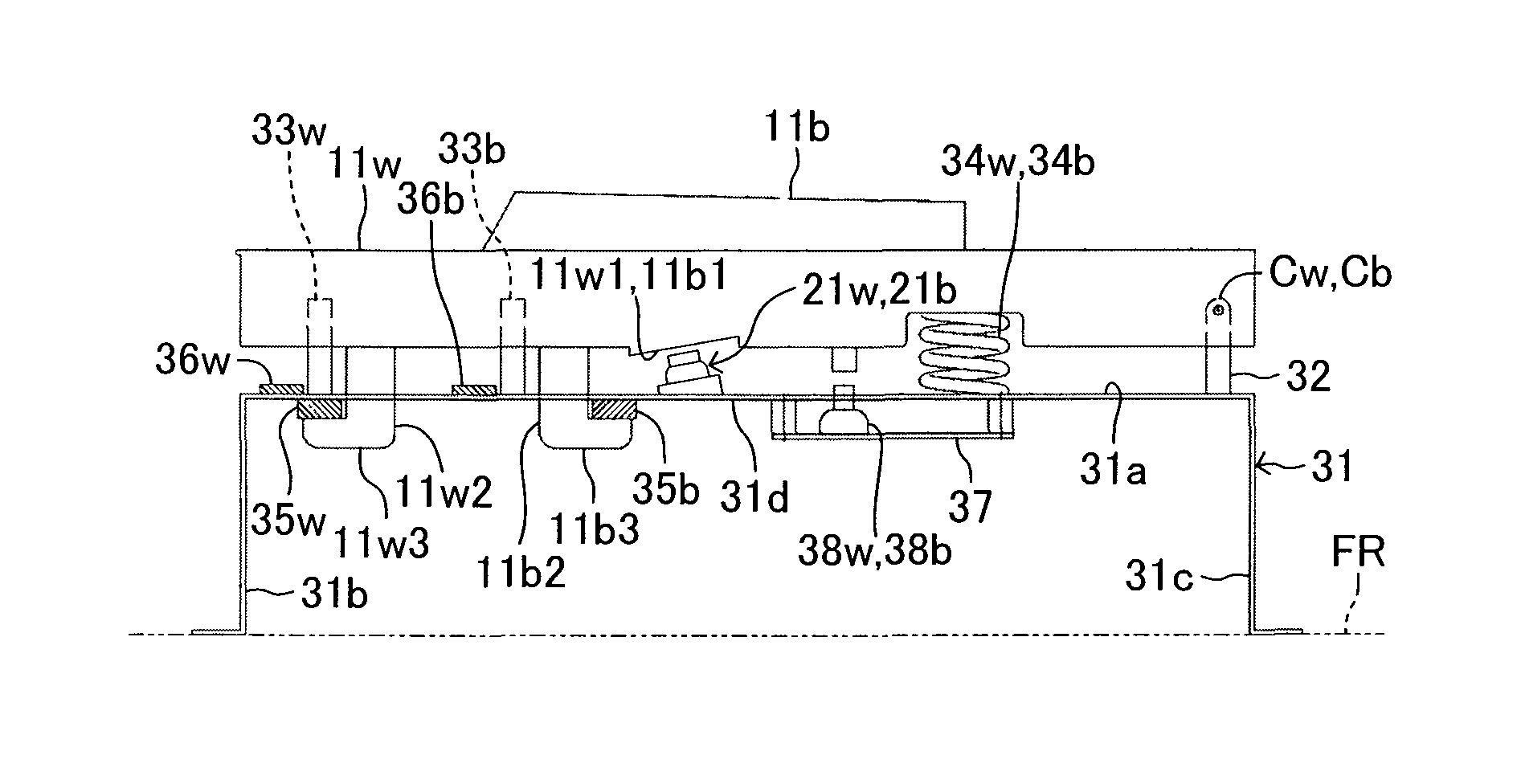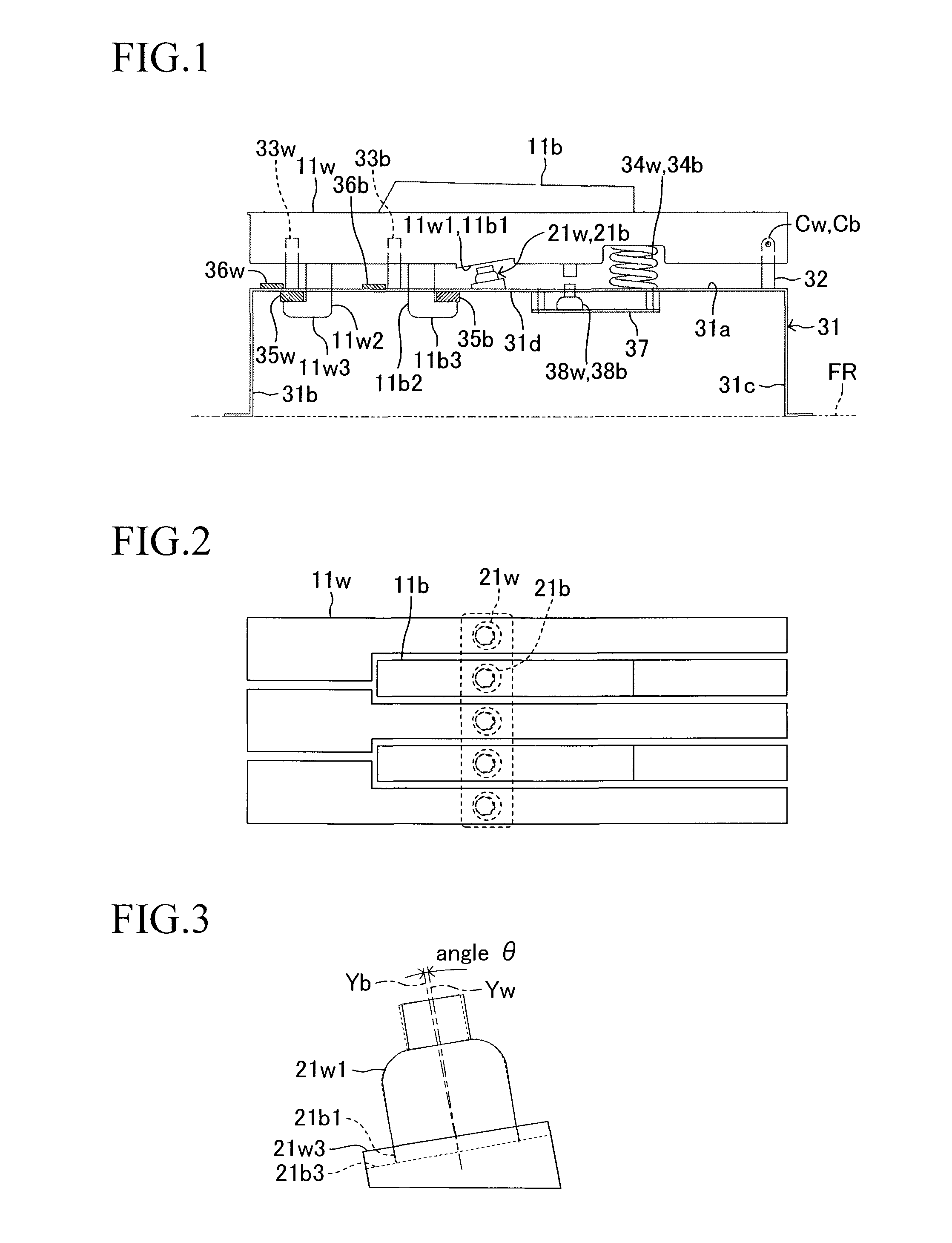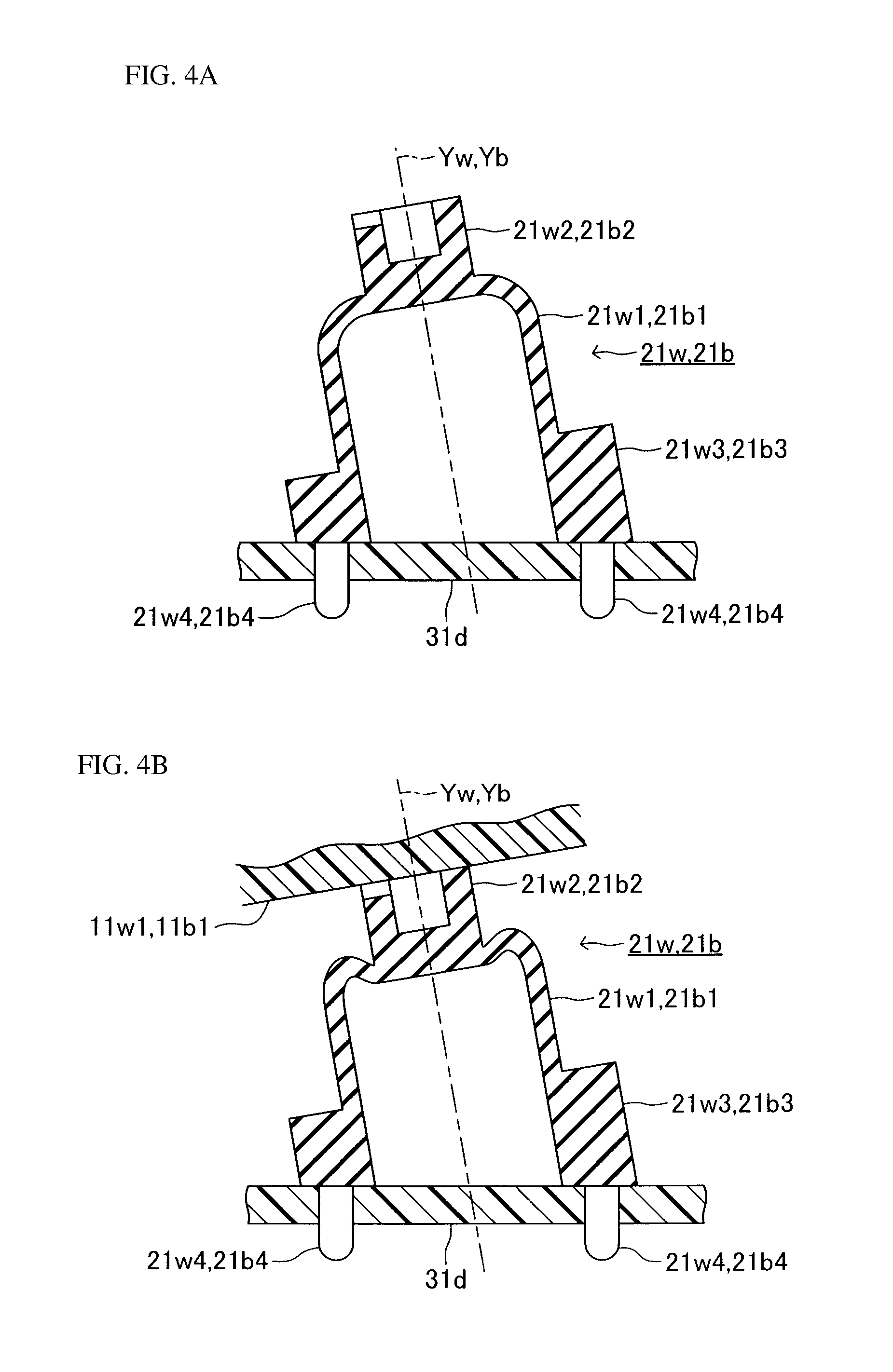Keyboard apparatus for an electronic musical instrument
a technology of electronic musical instruments and keyboards, applied in the direction of instruments, electronic musical instruments, etc., can solve the problems of inability to provide a player with uniformity, inability to obtain ideal characteristics of reaction force, and inability to provide an ideal click sensation
- Summary
- Abstract
- Description
- Claims
- Application Information
AI Technical Summary
Benefits of technology
Problems solved by technology
Method used
Image
Examples
first embodiment
a. First Embodiment
[0031]The first embodiment of the present invention will now be described with reference to the drawings. FIG. 1 is a schematic side view indicative of a keyboard apparatus according to the first embodiment seen from the right. FIG. 2 is a schematic top view of the keyboard apparatus. In the drawings of the present invention, the front-rear direction of the keyboard apparatus is defined as the lateral direction, and the vertical direction of the keyboard apparatus is defined as the vertical direction.
[0032]The keyboard apparatus has a plurality of white keys 11w and a plurality of black keys 11b which are to be depressed and released by a player. The keyboard apparatus also has a plurality of reaction force generation members 21w, 21b each exerting a reaction force against a player's depression of its corresponding key. The white key 11w is long in the front-rear direction, has a U-shaped cross-section which is open downward, and is located on a flat upper plate p...
second embodiment
b. Second Embodiment
[0064]The first embodiment and its modifications are configured such that the white key 11w and the black key 11b are provided with the depression portion 11w1 and 11b1, respectively, while the reaction force generation members 21w and 21b are fastened to the supporting portion 31d provided on the upper plate portion 31a of the key frame 31. In the first embodiment and its modifications, furthermore, by the depression of the white key 11w and the black key 11b, the top portions 21w2 and 21b2 of the reaction force generation members 21w and 21b are depressed with the depression portion 11w1 and 11b1, respectively. Instead of such a configuration, however, the reaction force generation members 21w and 21b may be provided on the white key 11w and the black key 11b, respectively. FIG. 12 indicates a keyboard apparatus according to the second embodiment in which the reaction force generation members 21w and 21b are provided on the white key 11w and the black key 11b, ...
third embodiment
c. Third Embodiment
[0071]Next, the third embodiment in which pivoting bodies which pivot in conjunction with pivoting of the white key 11w and the black key 11b depress the reaction force generation members 21w and 21b will be explained. FIG. 13 indicates a keyboard apparatus according to the third embodiment. The keyboard apparatus has hammers 41w and 41b which are the above-described pivoting bodies such that the hammers 41w and 41b correspond to the white key 11w and the black key 11b, respectively.
[0072]The hammers 41w and 41b are supported by hammer supporting members 42 provided for the respective white key 11w and black key 11b so that the hammers 41w and 41b can pivot. Each of the hammer supporting member 42 extends downward from the undersurface of the upper plate portion 31a such that the hammer supporting member 42 is situated at the middle of the white key 11w and the black key 11b in the front-rear direction. The hammers 41w and 41b are formed of base portions 41w1 and ...
PUM
 Login to View More
Login to View More Abstract
Description
Claims
Application Information
 Login to View More
Login to View More - R&D
- Intellectual Property
- Life Sciences
- Materials
- Tech Scout
- Unparalleled Data Quality
- Higher Quality Content
- 60% Fewer Hallucinations
Browse by: Latest US Patents, China's latest patents, Technical Efficacy Thesaurus, Application Domain, Technology Topic, Popular Technical Reports.
© 2025 PatSnap. All rights reserved.Legal|Privacy policy|Modern Slavery Act Transparency Statement|Sitemap|About US| Contact US: help@patsnap.com



